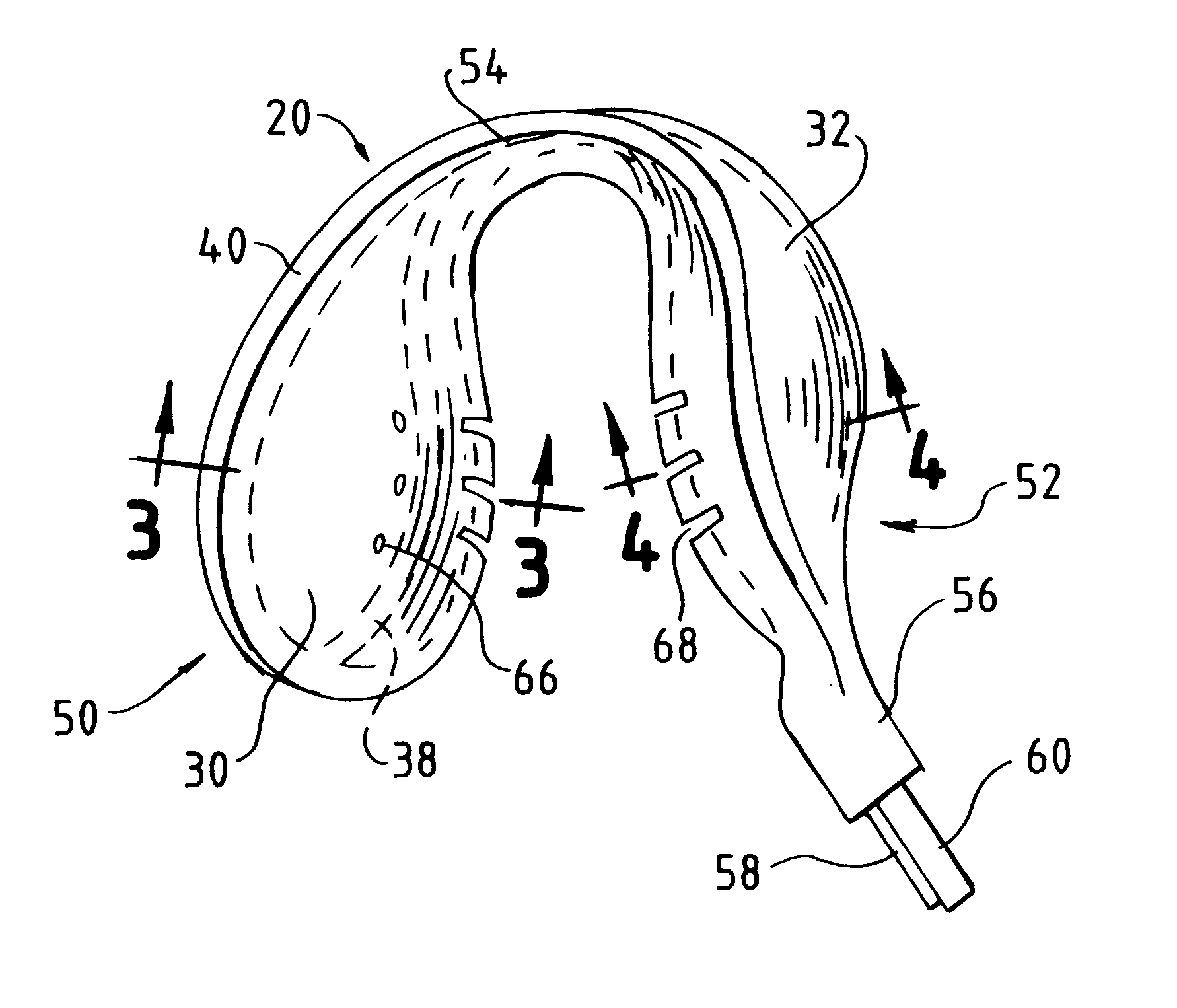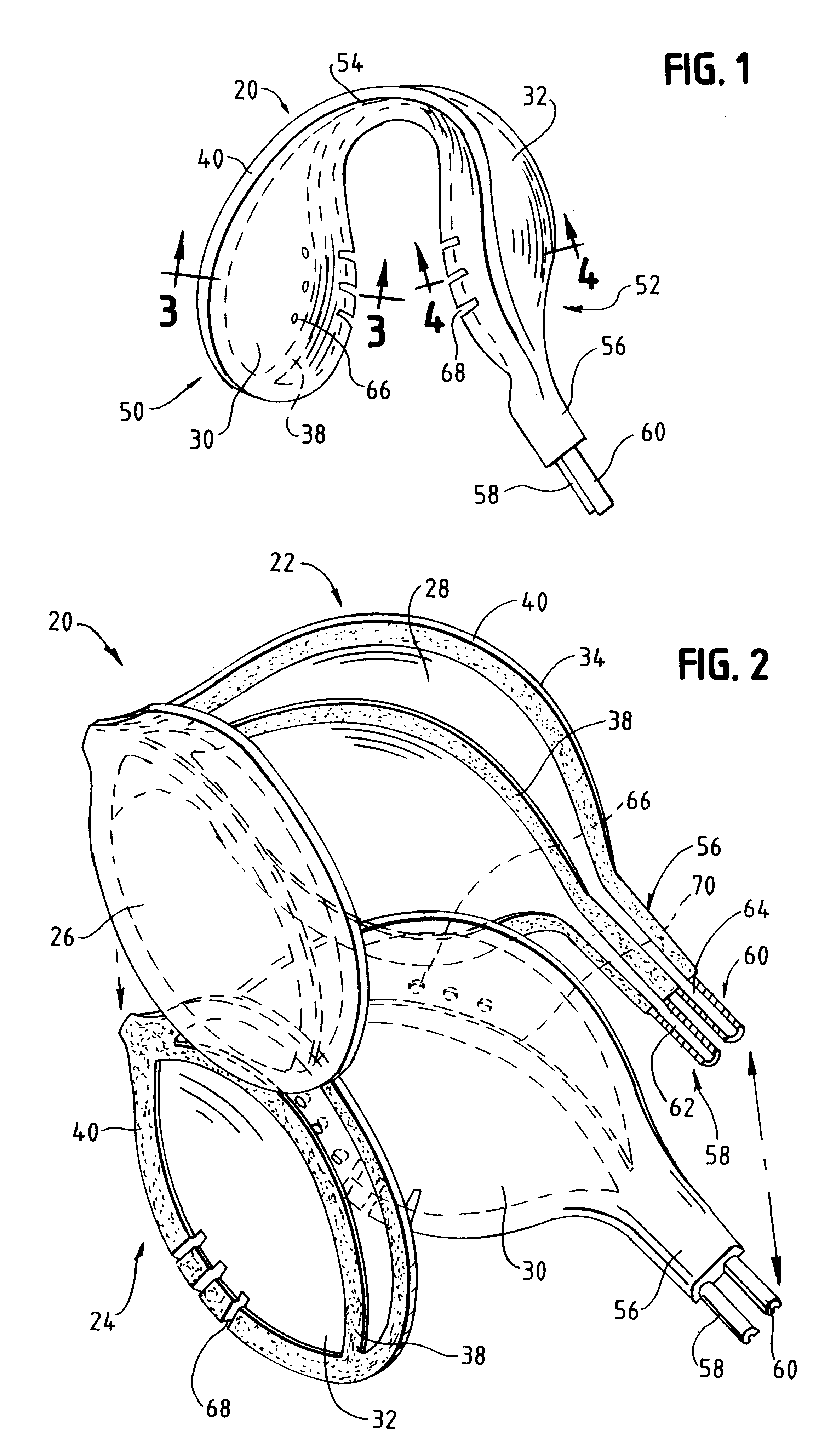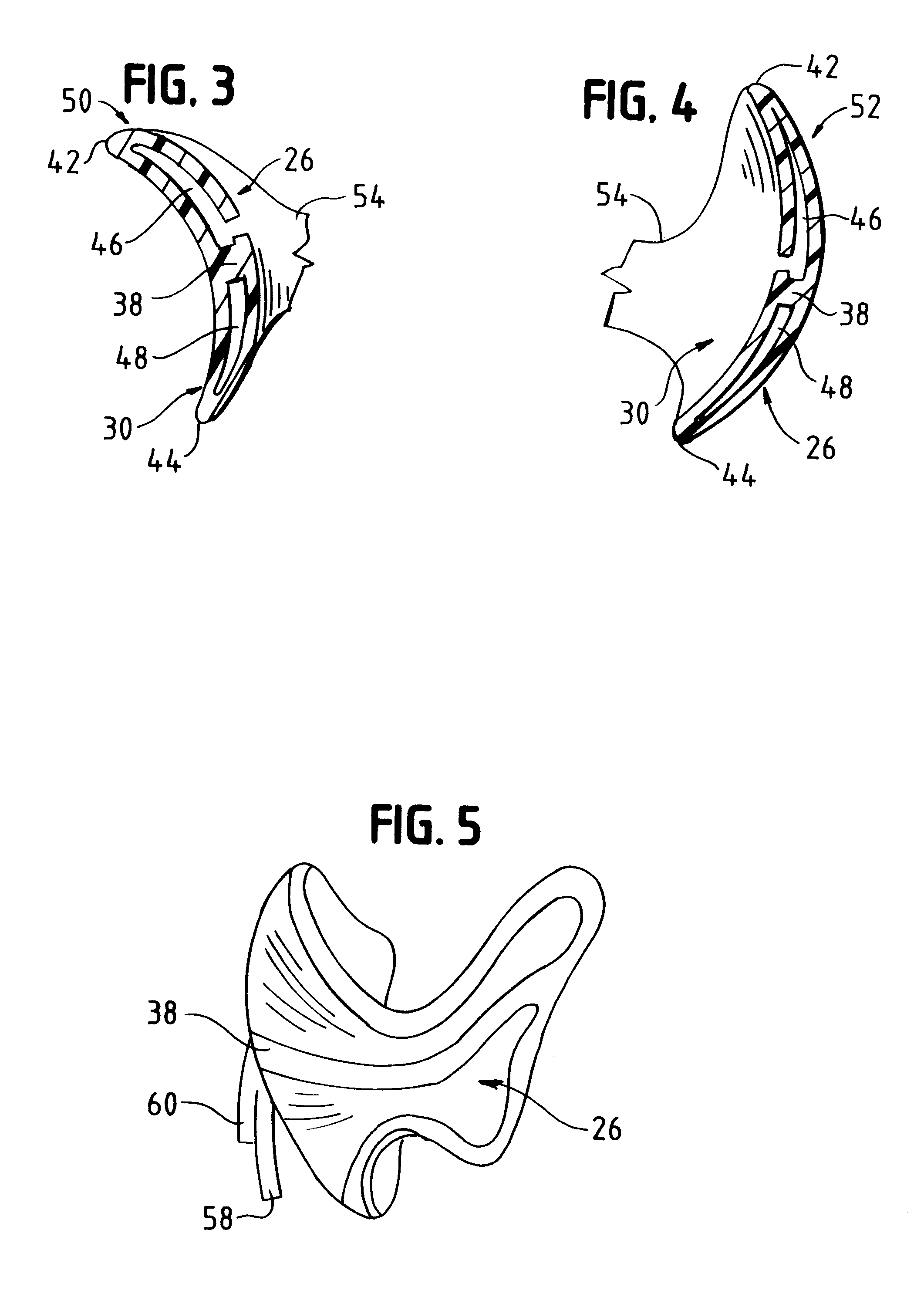Oral isolation device with evacuation chambers
a technology of oral isolation and evacuation chamber, which is applied in the field of oral isolation devices, can solve the problems of no application for use with the upper teeth or on the lower teeth other than the front teeth, and many unique surgical difficulties for dentists
- Summary
- Abstract
- Description
- Claims
- Application Information
AI Technical Summary
Benefits of technology
Problems solved by technology
Method used
Image
Examples
Embodiment Construction
The following description of the preferred embodiment will be better understood with reference to the appended drawings. As those skilled in the art understand, the oral cavity is a difficult area within which to perform procedures. The dentist and patient are best served when the size of the operative field is optimized. The primary goal is to isolate the area in which a procedure is to be performed. A secondary goal is to keep that area as free as possible from collected saliva, fluid, aerosol, and debris. The present invention addresses those problems and concerns in an improved Oral Isolation Device (device) 20.
Turning to FIG. 1, a top view of device 20 is depicted. Turning to FIG. 2, it can be seen that in its preferred embodiment, device 20 is comprised of two sections, outer section 22 and inner section 24. While the preferred embodiment envisions an outer section and an inner section, this is done for manufacturing purposes only. The scope and spirit of the inventive device ...
PUM
 Login to View More
Login to View More Abstract
Description
Claims
Application Information
 Login to View More
Login to View More - R&D
- Intellectual Property
- Life Sciences
- Materials
- Tech Scout
- Unparalleled Data Quality
- Higher Quality Content
- 60% Fewer Hallucinations
Browse by: Latest US Patents, China's latest patents, Technical Efficacy Thesaurus, Application Domain, Technology Topic, Popular Technical Reports.
© 2025 PatSnap. All rights reserved.Legal|Privacy policy|Modern Slavery Act Transparency Statement|Sitemap|About US| Contact US: help@patsnap.com



